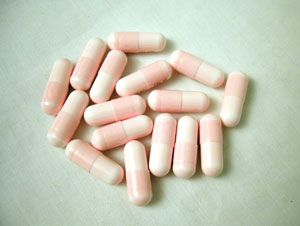Researchers investigate the potential link between dietary polyunsaturated fatty acids and the prevalence of glaucoma in the United States.
Glaucoma is a slow and progressive eye disease that if left untreated can cause irreversible blindness.
Glaucoma is often associated with elevated pressure within the eye that leads to optic (eye) nerve damage and vision loss.
Although there are many identified risk factors for glaucoma, such as family history and age, elevated pressure within the eye is the only known modifiable factor. Identification of other modifiable risk factors is vital to advance medical treatment methods.
Some evidence suggests that dietary polyunsaturated fatty acids may also be a modifiable risk factor in the progression of glaucoma.
Previous Studies: Higher Fatty Acid Intake Associated with Decreased Incidence
Polyunsaturated fatty acids (PUFAs) are nutrients essential to human development and health.
Some PUFAs, like omega-3 and omega-6 fatty acids, are not made within the body and must be consumed. Previous research has revealed that reduced omega-3 fatty acid levels have been found in patients with glaucoma.
A decreased incidence of glaucoma has also been shown to be associated with a high ratio of omega-6 to omega-3 fatty acid intake.
These findings generate interest as to whether a relationship may exist between dietary intake of PUFAs and the prevalence of glaucoma.
What is the Relationship between Fatty Acids and Glaucoma?
In a recent study published in JAMA Ophthalmology, researchers in the United States used the National Health and Nutrition Examination Survey (NHANES) database to examine daily dietary intake of fatty acids and glaucoma prevalence.
The survey collected data from 2005 to 2008 and included interviews, physical examinations, and laboratory.
The present study includes data from 3,865 participants who were 40 years or older, had complete vision and diet questionnaires, and had available eye examination results.
The researchers measured the participants’ daily dietary PUFA consumption through interviews.
The primary outcome was the prevalence of glaucoma, as defined by the Rotterdam criteria. The Rotterdam criteria uses a combination of optic nerve appearance and visual field defects for a glaucoma diagnosis.
Analysis revealed that the participants with glaucoma were significantly older and had lower consumption levels of saturated and monounsaturated fatty acids than participants without glaucoma.
Interestingly, there was no significant difference in mean daily dietary consumption of PUFAs found among participants with or without glaucoma.
However, increased consumption levels of PUFA subtypes eicosapentaenoic acid (EPA) and docosahexaenoic acid (DHA) were associated with lower odds of having glaucoma. Further analysis grouped daily dietary PUFA intake into quartiles and then examined its relationship with glaucoma.
Findings showed that participants with PUFA intake in the second and third quartiles demonstrated increased odds of having glaucoma.
Contradictory Findings
The results suggest that increased intake of EPA and DHA omega-3 PUFAs are associated with a lower likelihood of glaucoma.
However, the results also show that participants with a daily dietary PUFA intake in the second and third quartiles demonstrate an increased risk of glaucoma.
In response to this contradictory finding the authors explain that although some subtypes of PUFAs may lower glaucoma risk, an excess of PUFA intake may not.
Alternately, the authors consider another hypothesis that perhaps this result is related to the ratio of omega-3 to omega-6 fatty acids. One major limitation was the observational and cross-sectional study design, which prevented the authors from drawing any casual associations between daily PUFA intake and glaucoma risk.
To extend these findings, future research will have to investigate this relationship in a longitudinal study.
Prospective studies should also consider investigating the ratio of omega-3 and omega-6 PUFA subtypes to understand how their intake levels affect the risk of glaucoma.
Written by Caitlin M. Byrne, BSc
Reference: Wang, Y.E., Tseng, V.L., Yu, F., Caprioli, J., & Coleman, A.L. (2017). Association of dietary fatty acid intake with glaucoma in the United States. JAMA Ophthalmology, 2017 Dec 21, DOI: 10.1001/jamaophthalmol.2017.5702



